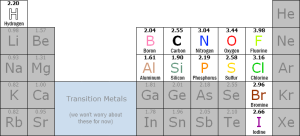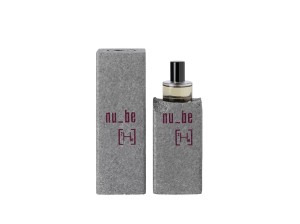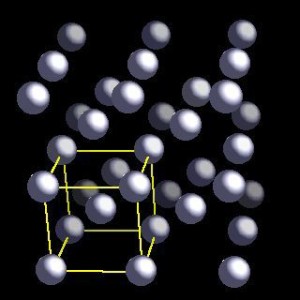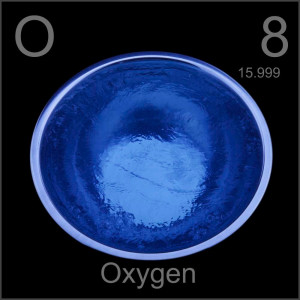As many of you know I am an organic chemist in my day job. This was why when I was following Pitti Fragranze in Florence, via other people’s photos, there was one that made me sit up and notice. Was that a periodic table of elements perfume? Now there have been plenty of geeky perfumes out there like Shirtless Kirk or Slave Leia but Pitti is not a place for those kinds of novelty fragrances to be found. I was intrigued and so I sent off to the company, nu_be, to get more information. These were not fragrances to be dismissed as perfumers Antoine Lie, Francoise Caron, Sylvie Fischer, and Nicolas Bonneville were the perfumers. As I would come to know them over the past few weeks I found them all to be quite fascinating attempts to capture an element in olfactory form.
Hydrogen is perhaps the most primal element as it fuels the sun which gives us life. Antoine Lie says in the press materials, “Hydrogen to me is the element of energy; that’s why my fragrance is so sparkling.” I felt it was more radiant than sparkling but it definitely has some heat to it. It starts with a solar flare of aldehydes over a fruity combo of mandarin and melon. The heart is all jasmine before it decays into a vegetal accord of basil, oak moss and musk. Hydrogen seems to compact in on itself as if it is readying for its own Big Bang. Hydrogen fairly buzzes off the skin in the early going but then it wears much closer and sensually later on.
Helium as an element is known to most as the gas which makes balloons float on the breeze and if you inhale it makes your voice sound funny. Sylvie Fischer envisions Helium as a perfume much differently as she was inspired to create a “spiritual smoke” and turns Helium into something that neither floats nor makes your voice sound funny but instead is a deep meditative scent. Mme Fischer uses bergamot to set things off as in the heart she combines iris concrete and Damask rose. The iris is deep and non-powdery and the Damask rose is spicy and decadent. The notes of styrax, benzoin and cinnamon tilt this to the resinous side. Tobacco, clary sage, and patchouli satisfyingly finish Helium off.
Lithium is the lightest metal and that duality of lightweight and shine is capture in Nicolas Bonneville’s fragrance. M. Bonneville chooses notes of contrasts throughout. The soft spice of saffron and the rich floral quality of rose; the minerality of flint contrasted with leather lead to ruminations of opposites and similarities. The saffron opens Lithium with a note of soft complex spice, the rose that arrives to partner it is a very straightforward rose and the overlap is present but M. Bonneville is more interested in differences and so iris forces a wedge between the two. Cedar offers the transition to the flint accord paired with a leather accord. The stoniness over the animalic almost seems paleolithic but it never pushes so far as to seem caveman-like. Lithium is a study of opposites to be enjoyed n an armchair not a cave.
Carbon is the most important element on the periodic table to an organic chemist, like me, so Francoise Caron was going to have to find something which made me feel its importance as a perfume. Mme Caron was after a fragrance which “captures the mysterious beginning of life.” To do this she creates a virtual primordial soup of cool and hot spices. She takes cardamom and ginger in a cooling balm and then adds the heat of black pepper and pepper blossom to create an olfactory collision. What arises out of this life-producing bath is an iris surrounded by herbs and resins full of energy. As the heart beats it turns to a base of raw sandalwood and cedar. This is a wood accord of raw newly cut wood as if it was just harvested. There is a green wood quality which meshes with the heart notes to make for a very satisfying experience.
Oxygen is usually thought of as the gas we breathe in but in its super cooled liquid form it is also rocket fuel. I believe it is this second form that Antoine Lie was thinking of when he composed Oxygen. There is a palpable chill that runs throughout its development. Where all of the rest of these first nu_be fragrances have a warmth to them Oxygen could give you frostbite it is so cool. A large amount of aldehydes combine to start bringing the temperature down as they are followed with a severely sharp vetiver before closing on a very synthetic white musk. The development feels very kinetic as if it is almost evaporating off your skin as liquid oxygen would do. This is the most unusual of these five fragrances and the chilliness of it will turn some off but I found I really liked the frosty nature while wearing it.
All five of the nu_be fragrances have average longevity and average sillage.
I have to say that none of these fragrances where what I expected in my mind’s eye when contemplating what an olfactory periodic table would smell like. Lucky for me a quartet of talented perfumers were present to teach me the basics of olfactory organic chemistry.
Disclosure: This review was based on press samples provided by nu_be.
–Mark Behnke, Managing Editor






